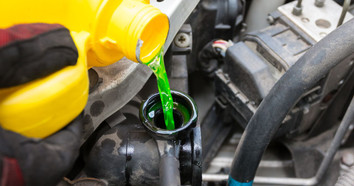Ethylene glycol (EG)—one of the earliest forms of anti-freeze—was invented by Charles-Adolphe Wurtz in 1856. Later on, scientists combined EG with water to create coolant. When propylene glycol (PG) came along, customized coolants took off. Since the early 1900s, coolant technology has advanced, and now there is a wide variety of coolants to choose from. However, this variety comes with a challenge—deciding which coolant is best for your application. Let’s start with the basics and take a look at the differences between synthetic and semi-synthetic coolants.
Synthetic Coolants
Synthetic coolants are the most expensive types, as they contain little to no mineral oil. Manufacturers formulate these coolants using an array of chemicals that protect and extend machine life. Because these coolants are so specialized, they generally provide the best heat reduction and rust control and can greatly extend sump life.
As mentioned, synthetic coolants are expensive and aren’t always accessible to clients. Many synthetic oil users will attest to the fact that these coolants are effective, so they tend to pay for themselves.
Semi-Synthetic Coolants
Semi-synthetic coolants tend to contain about 5–30 percent mineral oil. These coolants are more widely available and less expensive than their synthetic counterparts. They offer the same protections as a synthetic coolant for less money. The difference is that the soluble oils within a semi-synthetic coolant slightly impede the process of heat dissipation and can be a food source for bacteria. However, high-quality semi-synthetic coolants typically contain additives that make up for this issue. Ultimately, you get what you pay for.
Which Coolant Is Right for Your Application?
The difference between synthetic and semi-synthetic coolants is the presence of mineral oil. Semi-synthetic coolants have mineral oil, while synthetic coolants do not, providing machines with longer-lasting protection. However, this doesn’t mean that you should use the most expensive synthetic coolant possible, as it’s not always necessary or available.
If your machine functions in a high-pressure, high-heat environment, needs to be water stable, or has certain cleanliness requirements, then you’ll want to get a synthetic coolant. For example, metalworking applications often require fully synthetic grinding coolants for quick and efficient heat dissipation. This is especially important when working with carbides or highly reactive metals.
If you’re buying coolant for your passenger car, then there’s really no reason to spend exorbitant amounts of money on synthetic coolant. You can still receive high-quality protection for less with a semi-synthetic coolant!

